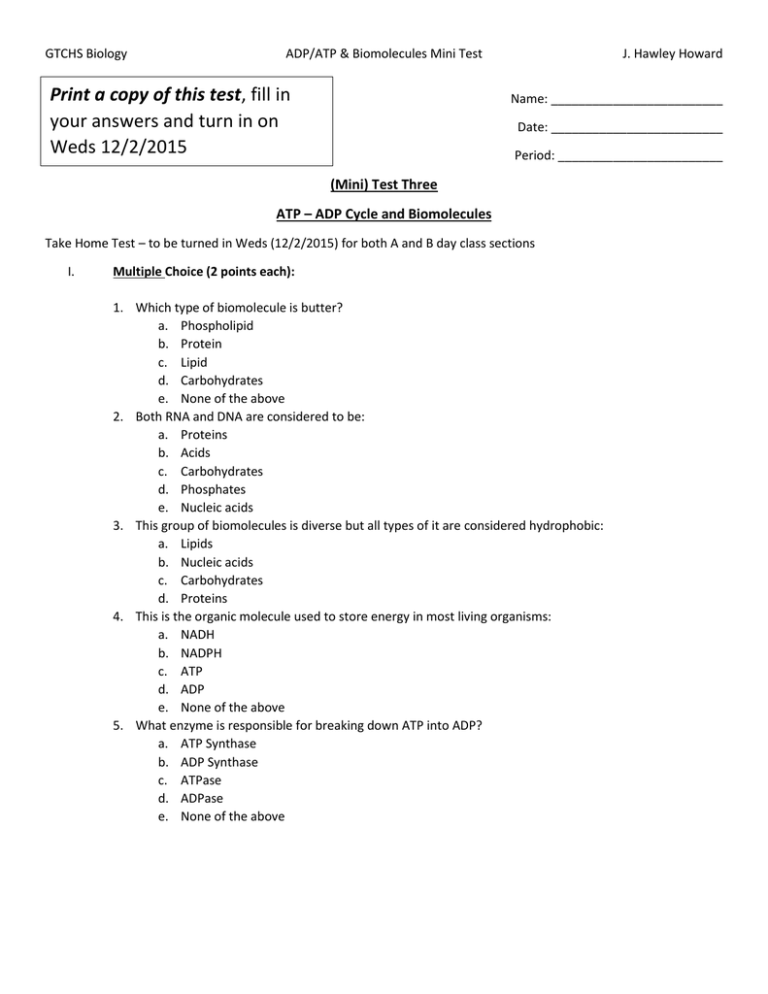ATP-ADP Cycle and Biomolecules
advertisement

GTCHS Biology ADP/ATP & Biomolecules Mini Test Print a copy of this test, fill in your answers and turn in on Weds 12/2/2015 J. Hawley Howard Name: _________________________ Date: _________________________ Period: ________________________ (Mini) Test Three ATP – ADP Cycle and Biomolecules Take Home Test – to be turned in Weds (12/2/2015) for both A and B day class sections I. Multiple Choice (2 points each): 1. Which type of biomolecule is butter? a. Phospholipid b. Protein c. Lipid d. Carbohydrates e. None of the above 2. Both RNA and DNA are considered to be: a. Proteins b. Acids c. Carbohydrates d. Phosphates e. Nucleic acids 3. This group of biomolecules is diverse but all types of it are considered hydrophobic: a. Lipids b. Nucleic acids c. Carbohydrates d. Proteins 4. This is the organic molecule used to store energy in most living organisms: a. NADH b. NADPH c. ATP d. ADP e. None of the above 5. What enzyme is responsible for breaking down ATP into ADP? a. ATP Synthase b. ADP Synthase c. ATPase d. ADPase e. None of the above GTCHS Biology ADP/ATP & Biomolecules Mini Test II. Fill in the blank (2 points each): J. Hawley Howard 6. _____________________________ is responsible for adding a phosphate back to ADP. 7. _____________________________ always have a phosphate group, a sugar group and a nitrogenous base. 8. Cellular membranes are made almost entirely out of ____________________________. 9. The ATP-ADP cycle is critical for creating ______________________________________. 10. This group of biomolecules are typically made of sugars and/or starches: Word Bank: Lipids ATP Synthase Usable Energy Phospholipids Kinetic Energy Lipids Carbohydrates Potential Energy Nucleic acids ATPase Chemical Energy III. True/False (1 point each): 11. _______ Carbohydrates are the most numerous type of biomolecule 12. _______ RNA is not considered a nucleic acid 13. _______ Proteins are essential structures for all living things 14. _______ All organic molecules contain carbon 15. _______ ATP stands for Adenosine Transphosphate IV. Short Answer (4 points each): 16. What is the main reason for the ADP-ATP cycle? Why do we all depend on it? 17. What do ATP and ADP stand for? Draw a rough schematic of each molecule: 18. Where is the majority of the energy contained in the ATP molecule?
